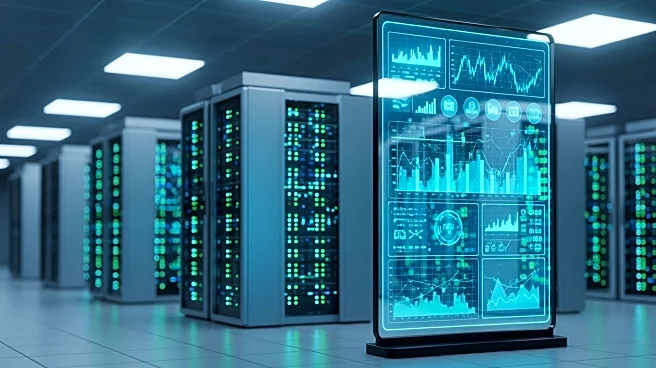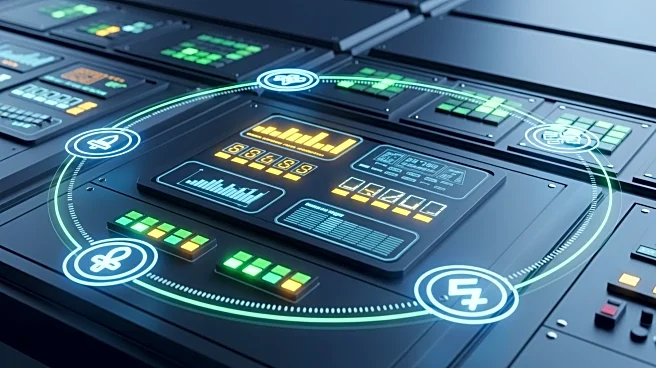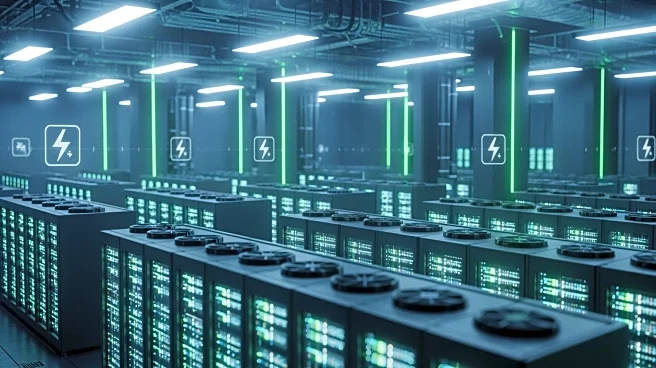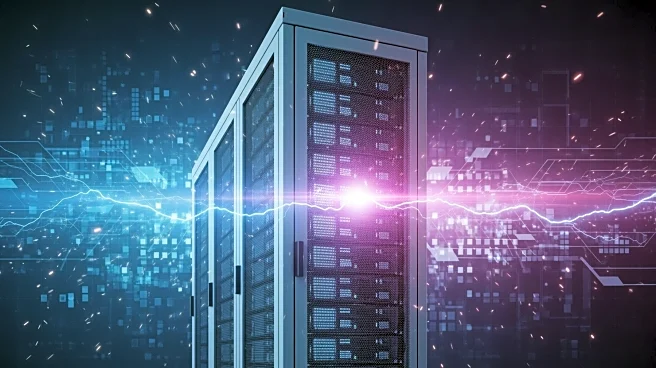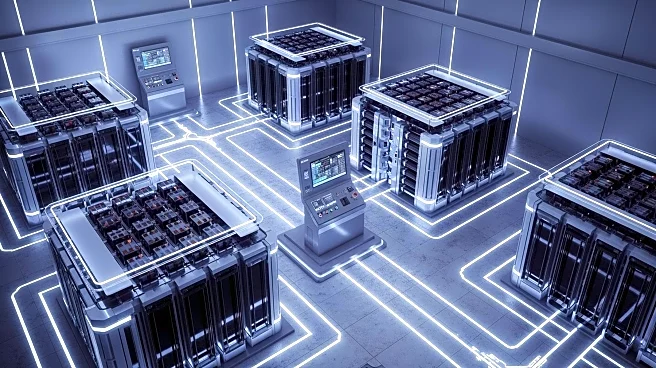What's Happening?
Data centers are facing new challenges in power quality due to the increasing demand from AI and high-performance computing applications. These compute-intensive tasks are vulnerable to power anomalies
such as voltage fluctuations and harmonics, which can lead to processor errors and system failures. The rapid, uneven power surges caused by AI workloads generate harmonics that distort voltage waves, creating 'dirty' power that can affect the grid and sensitive equipment. New technology, such as capacitive energy storage systems, is being developed to counteract subharmonics without increasing power and cooling requirements.
Why It's Important?
The rise of AI applications is transforming data center operations, necessitating improved power quality management to prevent disruptions and equipment damage. As data centers proliferate, ensuring stable power quality becomes crucial to maintaining operational efficiency and reliability. Addressing subharmonics is essential to prevent premature equipment failure and ensure the integrity of AI models and algorithms. This development is significant for the tech industry, as it seeks to balance innovation with infrastructure stability.
What's Next?
Data center operators are encouraged to take proactive measures to improve power quality, such as consulting on harmonics during system design and deploying smart harmonic filters. Collaboration with utilities to forecast and manage large AI loads will be vital. As technology evolves, operators must adapt to new solutions to mitigate power quality issues, ensuring the sustainability of AI-driven operations.
Beyond the Headlines
The focus on power quality in data centers highlights the broader impact of AI on infrastructure and energy consumption. As AI applications grow, the demand for efficient power management solutions will increase, driving innovation in energy technology. This shift may lead to new standards and practices in data center operations, influencing the future of tech infrastructure.



